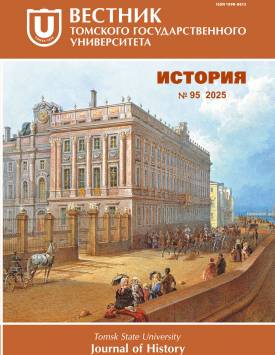Visual image of Congress Poland in the second half of the 19th – early 20th centuries in the Russian press and printed publications
The article deals with illustrations in albums, magazines and other publications of the second half of the 19th -early 20th centuries, depicting the Kingdom of Poland. The purpose of the study is to analyze how the image of the Kingdom of Poland was presented on visual material and comments on it and to determine the characteristic that the Poles and the Kingdom of Poland were endowed with by illustrators and authors of articles. Popular ethnographic albums containing articles about the Poles are considered: «Description ethnographique des peuples de la Russie» by T. D. Pauli, «Russian peoples: pen and pencil sketches» by N. Zograf, «Peoples of the Earth» by A. Ostrogorsky. The magazines «Niva», «Picturesque Review», «Peoples of Russia» are involved. Also the article considers the encyclopedia "Picturesque Russia". The scientific novelty of the work lies in the analysis of not only the verbal, but also the visual component of the image of the Kingdom of Poland. As a part of the work, each essay and illustration is examined for the transmission of certain stereotypes about the Poles, and the stereotype is analyzed on being negative or positive. As a result, it was determined that the illustrations were not free from the transmission of negative stereotypes by the authors. In almost all publications, the Poles were portrayed from a negative point of view, which, according to the author, was caused by the memory of the November, January and Krakow uprisings. The author declares no conflicts of interests.
Keywords
Congress Kingdom of Poland, visual image, the Russian Empire, ethnographic albumsAuthors
| Name | Organization | |
| Pavlichenko Darya I. | Saint Petersburg State University | dasha00.000@yandex.ru |
References

Visual image of Congress Poland in the second half of the 19th – early 20th centuries in the Russian press and printed publications | Tomsk State University Journal of History. 2025. № 95. DOI: 10.17223/19988613/95/22
